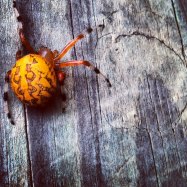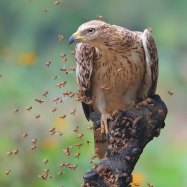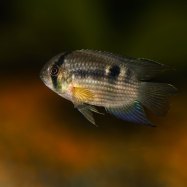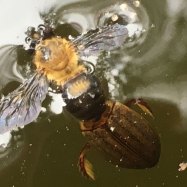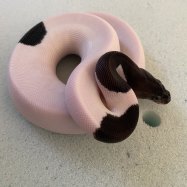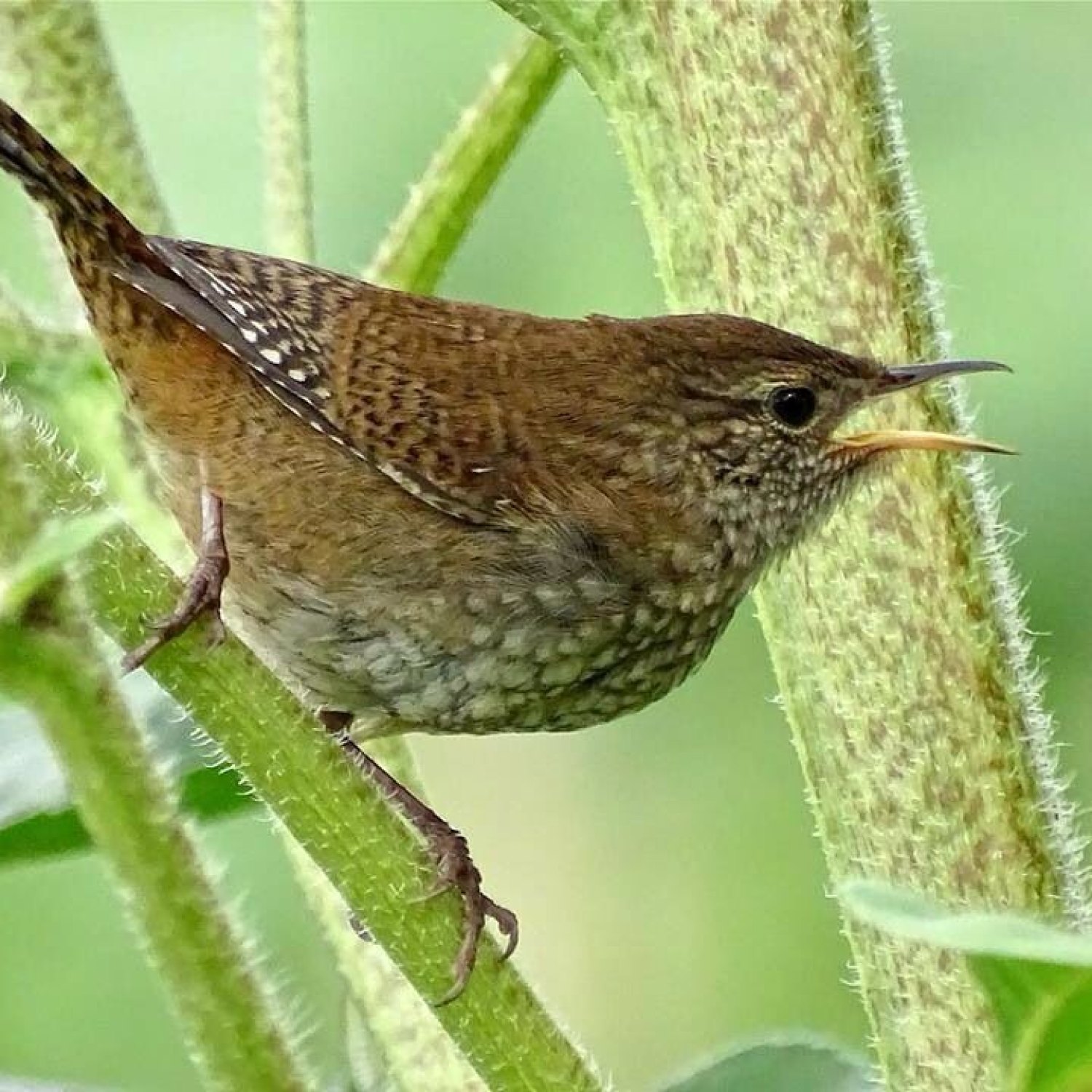
House Wren
4.3 - 5.1 inches (11 - 13 cm)
The House Wren, also known as a Troglodyte or Jenny Wren, is a small, compact bird found in North and South America. With a length of 4.3 - 5.1 inches, these energetic birds are known for their beautiful songs and their ability to nest in unexpected places. Keep an eye out for these tiny creatures in your backyard or neighborhood! #HouseWren #Birdwatching #NatureFacts
Animal Details Summary:
Common Name: House Wren
Kingdom: Animalia
Habitat: Woodlands, forests, gardens
The Quirky House Wren: A Tiny Bird with a Big Personality
The House Wren, scientifically known as Troglodytes aedon, is a small passerine bird that can be found in the woodlands, forests, and gardens of North and South America. With its unique characteristics and lively personality, this tiny bird has become a favorite among bird watchers and nature enthusiasts.Despite its small size, the House Wren has a big impact on its environment. In this article, we will delve into the world of the House Wren, exploring its physical and behavioral traits, habitat, diet, and distribution House Wren. Whether you are a bird lover or simply curious about this fascinating creature, this article will surely pique your interest.
A Closer Look at the House Wren's Taxonomy
Before diving into the nitty-gritty details of the House Wren, let's first take a look at its taxonomy. Taxonomy is the classification of organisms based on their characteristics, and it helps us understand the relationships between different species.The House Wren belongs to the Animalia kingdom, which includes all living organisms that are made up of cells, can move on their own, and obtain energy through food. It is also a member of the Chordata phylum, characterized by the presence of a spinal cord and a backbone.
In the class Aves, we can find all birds, including the House Wren. This class is further divided into orders, and the House Wren is part of the Passeriformes order, also known as the perching birds. This order includes more than half of all bird species, making it the largest order among birds.
In the family Troglodytidae, we can find the House Wren along with other wren species Hornbill. This family of birds is known for their small and compact bodies, as well as their energetic and vocal nature.
A House Wren's Habitat and Distribution
The House Wren is a migratory bird that can be found in both North and South America. It is the most widely distributed wren in the Americas, with a range that extends from southern Canada to northern Argentina. It is also the only wren species that can be found in both the United States and Canada.In terms of habitat, the House Wren is quite versatile and can be found in a variety of environments. However, it prefers to reside in woodlands, forests, and gardens with plenty of shrubs and trees for nesting and foraging. It is also known to adapt well to human settlements and can be found in urban and suburban areas.
One interesting fact about the House Wren is that it is known to be a "trash bird." This means that it often uses miscellaneous items from its surroundings, such as pieces of paper, string, or feathers, to line its nest.
The Lifespan and Physical Appearance of a House Wren
The House Wren is a small bird, with a length ranging from 4.3 to 5.1 inches (11 to 13 cm). It has a compact body with a slightly curved posture, which gives it a hunched appearance. Additionally, its wings are short and rounded, making it a quick and agile flyer.The coloring of the House Wren is mainly brown with fine barring or stripes on its wings and tail. This mottled appearance helps it blend in with its surroundings and provides camouflage from potential predators. However, some subspecies of House Wrens may have slightly different coloring, such as a reddish-brown or gray hue.
One notable physical feature of the House Wren is its short, thin beak, which is perfectly suited for its insectivorous diet. The House Wren has excellent eyesight, and its eyes are positioned on the side of its head, giving it a wide field of vision.
In terms of lifespan, the House Wren typically lives for about 6 to 8 years in the wild. However, there have been cases of House Wrens living up to 11 years in captivity.
A House Wren's Feeding Habits
As mentioned earlier, the House Wren is an insectivorous bird, meaning it feeds primarily on insects. It has a diverse diet and will eat almost any type of insect it can find, including beetles, grasshoppers, caterpillars, and spiders. It also occasionally consumes fruits and berries, especially during the winter when insects are scarce.To catch its prey, the House Wren uses a hunting technique called "gleaning." It hops from branch to branch, looking for insects hiding in the leaves or on the bark of trees. Once it spots its prey, it quickly pounces and captures it with its sharp beak.
Interestingly, House Wrens are known to be territorial and will fiercely defend their territory, including their food sources. They may even go as far as attacking larger birds or animals that enter their territory.
The Vocalizations and Behaviors of a House Wren
One of the most remarkable traits of the House Wren is its vocal abilities. Despite its small size, this bird has a loud and varied song that can be heard throughout its territory. It uses different songs to attract mates, defend its territory, and communicate with other House Wrens.During the mating season, male House Wrens build multiple nests to impress potential mates. Once a pair bonds, the female chooses one of the nests to lay her eggs, and the other nests are abandoned. This behavior is known as "foliage decorating," and it is quite unique to the House Wren.
The House Wren is a solitary bird and is most commonly found alone or in pairs. However, during migration or in areas where food is abundant, it may form small flocks. It is also known to be quite curious and can be spotted investigating new objects or observing other animals.
Conservation Status and Threats to the House Wren
Currently, the House Wren is listed as "least concern" on the International Union for Conservation of Nature (IUCN) Red List. This means that its population is stable, and there are no immediate threats to its survival.However, the House Wren is still vulnerable to certain threats, such as habitat loss and degradation due to urbanization and deforestation. In some areas, it is also hunted for its feathers and hunted by some predators such as cats, snakes, and larger birds.
In Conclusion
The House Wren may be small, but it certainly leaves a big impression on those who encounter it. From its impressive vocalizations to its quirky behaviors, this tiny bird never fails to captivate and intrigue. With a widespread distribution and adaptability to various habitats, it is also a symbol of resilience and survival in the face of changing environments.Whether you are a seasoned bird watcher or a curious nature lover, the House Wren is undoubtedly a fascinating creature to learn about and observe. Its presence in our world serves as a reminder of the diversity and wonder of the natural world, and how each species plays a crucial role in maintaining the delicate balance of our ecosystem.

House Wren
Animal Details House Wren - Scientific Name: Troglodytes aedon
- Category: Animals H
- Scientific Name: Troglodytes aedon
- Common Name: House Wren
- Kingdom: Animalia
- Phylum: Chordata
- Class: Aves
- Order: Passeriformes
- Family: Troglodytidae
- Habitat: Woodlands, forests, gardens
- Feeding Method: Insectivorous
- Geographical Distribution: North and South America
- Country of Origin: United States
- Location: Throughout North and South America
- Animal Coloration: Brown with fine barring on wings and tail
- Body Shape: Small, compact
- Length: 4.3 - 5.1 inches (11 - 13 cm)
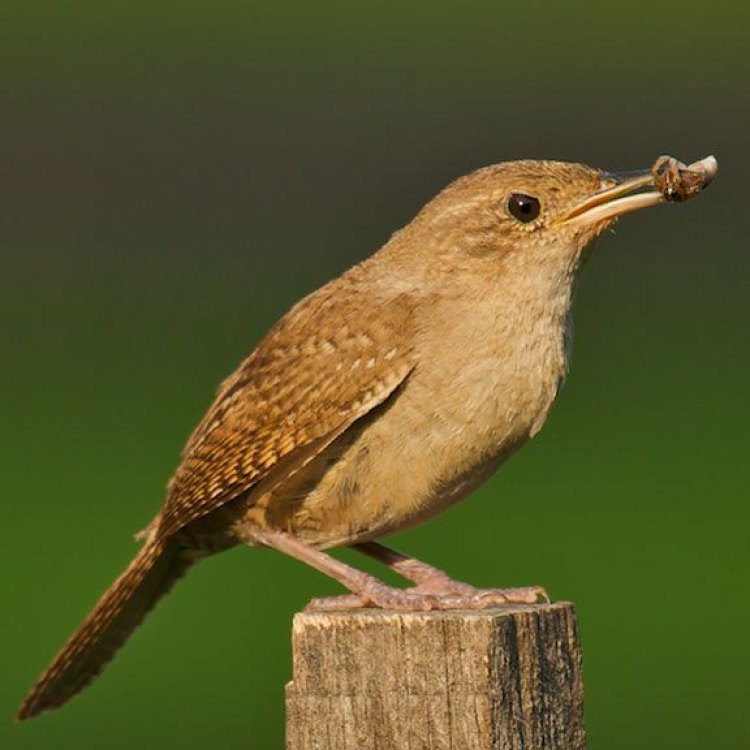
House Wren
- Adult Size: Small
- Average Lifespan: 2 - 5 years
- Reproduction: Monogamous
- Reproductive Behavior: Nest-building
- Sound or Call: Loud, melodious song
- Migration Pattern: Migratory
- Social Groups: Solitary
- Behavior: Active and agile
- Threats: Habitat loss, predation
- Conservation Status: Least Concern
- Impact on Ecosystem: Insect control
- Human Use: Garden pest control
- Distinctive Features: Short, stubby tail
- Interesting Facts: House Wrens are known for their energetic and melodious songs. They are highly territorial and will aggressively defend their nesting sites. Despite their small size, House Wrens migrate long distances between their breeding and wintering grounds.
- Predator: Birds of prey, snakes, mammals
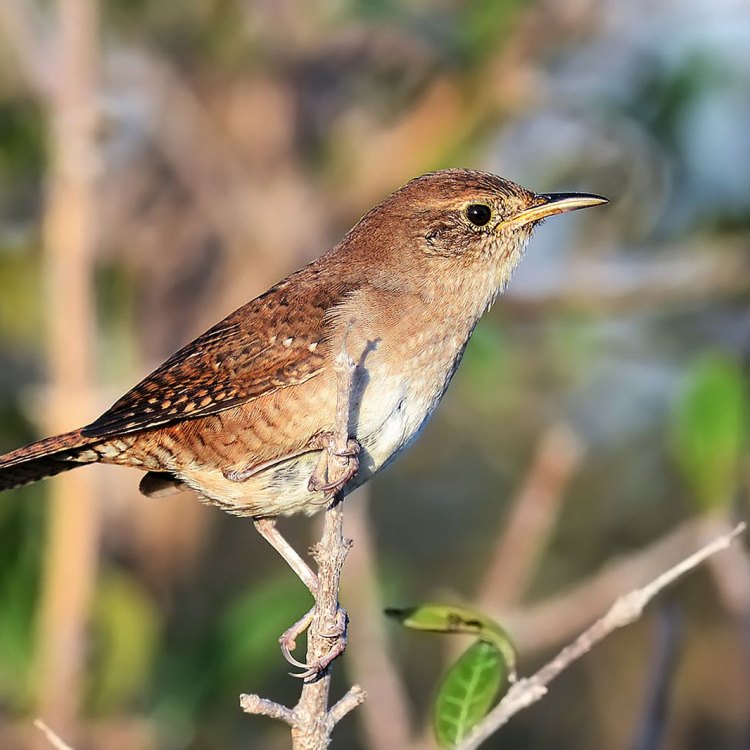
Troglodytes aedon
The Dynamic Creatures of the House Wren: From Music to Pest Control
Have you ever taken a walk in the woods or strolled through your backyard and heard a loud, melodious song? Chances are, you were listening to the sweet melody of a House Wren. These small, yet feisty birds have captured the hearts of many with their vibrant songs and interesting behavior. In this article, we will explore the unique features and characteristics of the House Wren, including its size, lifespan, reproductive behavior, sound, migration pattern, social groups, behavior, threats, conservation status, impact on the ecosystem, human use, distinctive features, and interesting facts.Size Matters: The Small Package of a House Wren
The House Wren, scientifically known as Troglodytes aedon, is a small bird belonging to the family Troglodytidae PeaceOfAnimals.Com. They are native to the Americas, with a distribution ranging from Canada to southern Argentina. Their size ranges from 11 to 13 centimeters (4.3 to 5.1 inches) in length, with an average weight of 10 grams (0.35 ounces). This makes them one of the smallest bird species in North America.As their name suggests, House Wrens are commonly found near human settlements such as gardens, parks, and backyard bird feeders. They are also prevalent in forests, woodlands, and shrublands, where they can find suitable nesting sites.
A Short but Adventurous Life: The Average Lifespan of a House Wren
The lifespan of a House Wren ranges from two to five years, with some individuals living up to seven years Hummingbird. These birds have a short but adventurous life, filled with migration, nesting, and defending their territory. They are highly adaptable and can adjust to various environments, making their lifespan relatively average compared to other bird species.Monogamy at its Finest: Reproductive Behavior of House Wrens
House Wrens are monogamous, meaning they mate with one partner for life. They typically form pairs during their wintering grounds and will migrate together to their breeding grounds. Once they arrive at their breeding site, the male will select a suitable nesting site, and both partners will work together to build their nest.Nest-Building: A Skill and a Weapon
House Wrens are skilled nest builders, using various materials such as twigs, grass, and feathers to construct their nests in tree cavities, birdhouses, or even old boots or cans. What’s even more fascinating is that House Wrens often build fake nests, known as "dummy" nests, to confuse potential predators. These nests have no eggs, and the House Wrens will lay their eggs in a different location, reducing the chances of their eggs being attacked.Nest-building is also utilized as a weapon. House Wrens are highly territorial and will aggressively defend their nesting sites from other birds, even larger species like Blue Jays or Northern Flickers. They will use their impressive nest-building skills to build multiple nests in their territory, making it difficult for intruders to locate their actual nesting site.
The Musician of the Bird World: The Loud, Melodious Song of House Wrens
Perhaps one of the most distinctive features of House Wrens is their loud, melodious song. They are known for their energetic and constant singing, which can be heard throughout the day. Male House Wrens use their songs to attract females and to mark their territory. Interestingly, each male House Wren has a specific song, which they will repeat continuously to defend their territory against competing males.The Perpetual Travellers: Migration Pattern of House Wrens
Despite their small size, House Wrens are brave and determined travelers. They undertake long-distance migrations between their breeding and wintering grounds. In the spring, they will travel from their wintering grounds in the southern United States or Central America to their breeding grounds in the northern parts of the United States or Canada. They will then make the journey back to their wintering grounds in the fall.Alone but not Lonely: The Solitary Social Groups of House Wrens
House Wrens are social birds but prefer to live in solitary pairs. They only form pairs to mate, and once their young have fledged, each pair goes their separate ways. However, these solitary pairs still remain in close proximity to other pairs, as they defend their territories from potential intruders.Active and Agile: The Behavior of House Wrens
House Wrens are highly active and agile birds, constantly hopping, climbing, and flitting through the foliage. They have strong legs and feet, which allow them to cling to vertical surfaces, such as tree trunks, while foraging for food. House Wrens have high metabolisms and need to consume large amounts of food to maintain their energy levels.Threats to Survival: Habitat Loss and Predation
The biggest threats to House Wrens are habitat loss and predation. As human development continues to encroach on their natural habitats, House Wrens are losing their nesting sites. Deforestation, land clearing for agriculture, and urbanization are all contributing factors to habitat loss for these birds.In addition to habitat loss, House Wrens face predation from a variety of animals, including birds of prey, snakes, and mammals. Small birds like House Wrens are at a disadvantage, making them easy targets for predators.
Least Concern: Conservation Status of House Wrens
Despite facing threats to their survival, the House Wren is currently listed as Least Concern on the International Union for Conservation of Nature (IUCN) Red List. This means that their population is stable, and the species is not considered at risk of extinction. However, conservation efforts are still essential in protecting their habitats and ensuring their survival in the future.The Little Helpers: Impact of House Wrens on the Ecosystem
Though small in size, House Wrens play a significant role in their ecosystems. They are insectivores, meaning they mainly feed on insects, spiders, and other small invertebrates. Insects are essential for pollination, decomposition, and pest control, making House Wrens valuable contributors to the ecosystem. By consuming large numbers of insects, House Wrens help to regulate insect populations, which prevents agricultural and garden pests from becoming a problem.Human Use: Garden Pest Control
As mentioned earlier, House Wrens are beneficial to humans as they help control insect populations. This makes them ideal for natural pest control in gardens, farms, and agricultural fields. By attracting House Wrens to your property, you can have a sustainable and eco-friendly way of controlling garden pests, without the use of harmful chemicals.Distinctive Features: Short, Stubby Tail of House Wrens
Although House Wrens may seem unremarkable at first glance, they do have a few distinctive features. One of the most notable is their short, stubby tail. This unique feature is an advantage for their active and agile behavior, allowing them to navigate through dense foliage with ease. Their tail also plays a role in their courtship displays, as males will fan out their tail feathers to attract females.Fascinating Facts about House Wrens
House Wrens are full of unique and interesting facts, making them a fascinating species to observe. For example, did you know that House Wrens can consume up to 2,000 insects in a single day? Or that they will often build decoy nests to trick potential predators? Another interesting fact is that House Wrens will occasionally join mixed-species foraging flocks in the winter, which is unusual for a solitary species.Predators of House Wrens
Unfortunately, House Wrens have many predators in the wild. Their small size makes them easy targets for larger birds of prey such as hawks, owls, and eagles. Snakes are also a significant threat, as they can easily enter and climb into nesting cavities. Even mammals like raccoons, squirrels, and cats can pose a danger to House Wrens and their young.In Conclusion
In conclusion, the House Wren is a small but mighty bird with unique features and behaviors. From their energetic songs to their impressive nest-building skills, House Wrens continue to capture the hearts of bird enthusiasts worldwide. Despite facing threats to their survival, these little birds continue to thrive and play a vital role in the ecosystem. As humans, it's essential to protect and preserve their habitats, not only for the House Wrens but for the overall health of our environment. So next time you hear the sweet melody of a House Wren, take a moment to appreciate and admire these dynamic creatures.
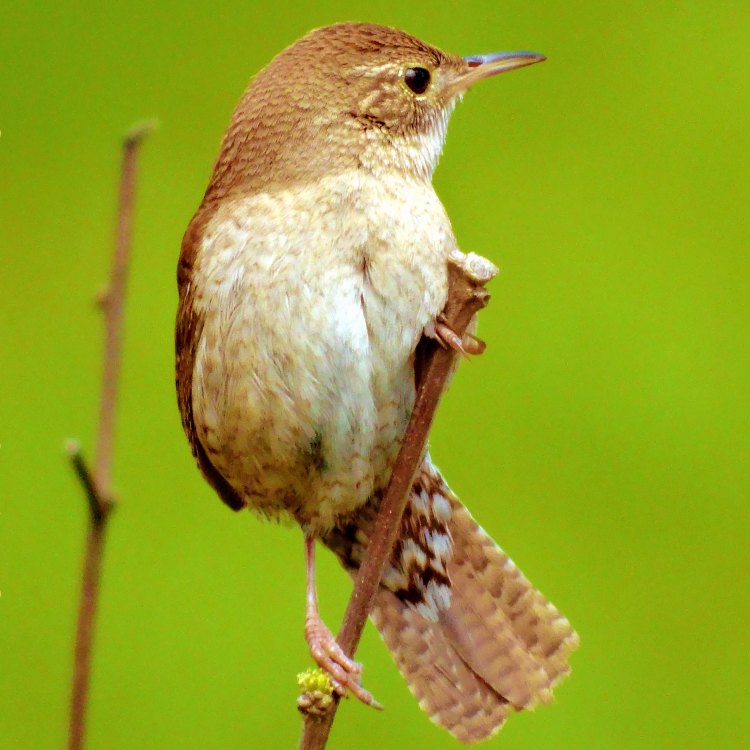
The Quirky House Wren: A Tiny Bird with a Big Personality
Disclaimer: The content provided is for informational purposes only. We cannot guarantee the accuracy of the information on this page 100%. All information provided here may change without prior notice.

